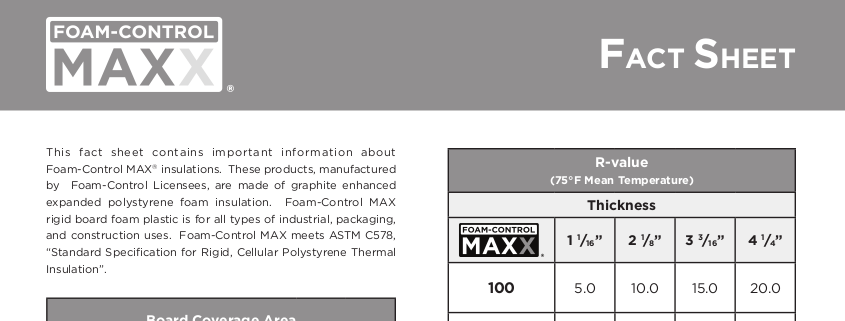Discover the Best Practices for Effective Foam Control in Industrial Applications
Discover the Best Practices for Effective Foam Control in Industrial Applications
Blog Article
Understanding the Importance of Foam Control in Industrial Processes
In industrial processes, foam control is usually a forgotten yet important aspect that straight influences functional efficiency and item stability. The presence of too much foam can lead to considerable obstacles, consisting of disrupted blending and decreased reaction kinetics, which might eventually influence product quality throughout different sectors such as drugs and food production.

The Function of Foam in Market
Foam plays a considerable function in numerous commercial procedures, affecting both performance and item quality. In sectors such as food and beverage, drugs, and petrochemicals, foam can offer both beneficial and detrimental objectives. In the food sector, foam stablizing is vital throughout procedures like whipping cream or creating beer, where the high quality of foam straight impacts customer understanding and product qualities.
In chemical production, foam can serve as an obstacle, protecting against the proper blending of reagents, which can result in suboptimal yields and incomplete responses. Alternatively, in procedures like flotation in mineral processing, foam is made use of to divide important minerals from waste material, boosting recuperation rates.
Furthermore, in wastewater therapy, foam development can indicate the existence of natural matter, serving as a crucial criterion for procedure monitoring. The capability to regulate foam is important for preserving procedure stability and optimizing functional prices. Understanding the function of foam in commercial applications permits drivers and engineers to execute effective foam administration approaches, guaranteeing that foam adds favorably to overall process efficiency while decreasing its prospective downsides.
Common Challenges of Foam Development
Lots of markets encounter substantial obstacles as a result of the unintended development of foam throughout different processes. Foam can interrupt the efficiency of operations, leading to raised downtime and greater functional expenses. In industries such as pharmaceuticals, food and beverage, and wastewater therapy, foam can prevent blending, decrease product return, and make complex splitting up processes.
Furthermore, foam can create safety and security dangers by blocking clear exposure, which is vital in atmospheres where accurate measurements and monitoring are necessary. The presence of foam can also lead to tools damages, as extreme stress accumulation may occur in activators and containers.
Furthermore, the requirement for regular intervention to manage foam can draw away sources and labor, inevitably influencing performance. Ecological guidelines posture an additional obstacle, as too much foam can cause non-compliance problems in effluent discharge, necessitating additional treatment processes.
Effect on Product High Quality

In chemical manufacturing, foam can impede response kinetics by restricting gas-liquid call, resulting in insufficient reactions and reduced yields. This not just influences the efficiency of manufacturing but can likewise result in ineffective final product that do not fulfill regulatory criteria or customer specs.
In addition, in pharmaceuticals, foam development throughout formulation procedures can introduce air bubbles into delicate compounds, jeopardizing medicine efficacy and security. In addition, foam can trigger functional issues such as overflow and equipment malfunctions, boosting downtime and upkeep prices, further affecting product high quality and uniformity.
Approaches for Effective Foam Control
Dealing with the difficulties presented by foam is essential for keeping product quality across various industrial industries. Efficient foam control methods are vital to mitigate the adverse effects of foam formation, which can disrupt operations and concession item honesty.
Among the key methods entails the choice and application of proper antifoaming agents. These agents are developed to decrease surface tension and hinder bubble formation, and their performance can vary based on the details process problems. Normal monitoring of foam levels is crucial to make sure timely intervention, allowing operators to apply antifoaming agents prior to foam becomes a significant problem.
Furthermore, maximizing procedure criteria such as temperature and agitation can play a critical role in foam management. Reducing agitation strength or adjusting feed prices can decrease foam generation. Executing mechanical foam control devices, such as foam breakers or defoamers, can additionally supply effective options for high-foaming applications.
Training workers on foam monitoring strategies and the relevance of maintaining optimal operating conditions even more enhances foam control initiatives. Foam Control. By using a mix of these strategies, sectors can successfully handle foam, making certain functional effectiveness and preserving the quality of their items
Future Patterns in Foam Monitoring
Exactly how will advancements in modern technology shape the future of foam monitoring in commercial processes? The combination of expert system (AI) and artificial intelligence will certainly revolutionize foam control techniques, allowing real-time surveillance and flexible responses to foam formation. These technologies can evaluate historic information and functional criteria to predict foam habits, enabling preemptive actions that boost process efficiency.
Moreover, the development of sophisticated foam control representatives, consisting of bio-based and eco-friendly options, is getting grip. These innovations not only reduce foam however likewise straighten with sustainability objectives, lowering the eco-friendly impact of commercial procedures.
Automation will certainly additionally play a crucial function, as automated foam control systems can maximize the dose of defoamers based upon real-time measurements, minimizing waste and enhancing efficiency.
In addition, the fostering of IoT (Net of Things) devices will that site help with smooth interaction in between tools and foam control systems, making certain an all natural strategy to foam monitoring. (Foam Control)
Conclusion
In conclusion, effective foam control is important for enhancing industrial procedures throughout different markets. The difficulties positioned by foam formation can dramatically impact item high quality and operational performance. Carrying out calculated foam administration techniques, consisting of using antifoaming representatives and process optimization, minimizes these difficulties. As industries proceed to evolve, recurring developments in foam control modern technologies will further improve productivity and sustainability, making certain compliance with ecological policies while keeping the integrity of items.
In the food industry, foam stablizing is crucial during procedures like whipping lotion or producing beer, where the high quality of foam straight impacts consumer understanding and item characteristics.
Comprehending the duty of foam in industrial applications permits drivers go to this website and designers to carry out effective foam administration approaches, making sure that foam contributes positively to general process performance while decreasing its prospective disadvantages.
Regular tracking of foam levels is critical to make sure timely treatment, enabling operators to apply antifoaming representatives before foam comes to be a significant problem.
Executing mechanical foam control devices, such as foam breakers or defoamers, can likewise offer efficient solutions for high-foaming applications.
The combination of fabricated knowledge (AI) and device discovering will certainly change foam control methods, making it possible for real-time you can try here tracking and adaptive actions to foam development.
Report this page